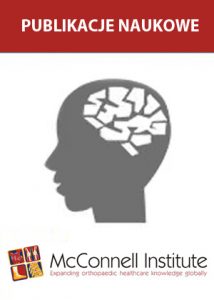2016 Patellofemoral pain consensus statement from the 4th International Patellofemoral Pain Research Retreat, Manchester. Part 1: Terminology, definitions, clinical examination, natural history, patellofemoral osteoarthritis and patient-reported outcome measures.

Crossley KM1, Stefanik JJ2, Selfe J3, Collins NJ4, Davis IS5, Powers CM6, McConnell J7, Vicenzino B4, Bazett-Jones DM8, Esculier JF9, Morrissey D10, Callaghan MJ11.
- La Trobe Sport and Exercise Medicine Research Centre, School of Allied Health, La Trobe University, Bundoora, Victoria, Australia.
- Department of Physical Therapy, Movement & Rehabilitation Sciences, Northeastern University, Boston, Massachusetts, USA.
- Faculty of Health, Psychology and Social Care, Department of Health Professions. Manchester Metropolitan University, Manchester, UK.
- School of Health and Rehabilitation Sciences, The University of Queensland, Brisbane, Queensland, Australia.
- Department of Physical Medicine and Rehabilitation, Spaulding National Running Centre, Harvard Medical School, Cambridge, Massachusetts, USA.
- Division of Biokinesiology & Physical Therapy, University of Southern California, Los Angeles, California, USA.
- McConnell Physiotherapy Group, Mosman, New South Wales, Australia.
- Department of Physical Therapy, Carroll University, Waukesha, Wisconsin, USA.
- Faculty of Medicine, Centre for Interdisciplinary Research in Rehabilitation and Social Integration Universite Laval, Quebec, Quebec, Canada.
- Centre for Sport and Exercise Medicine, Queen Mary University of London, London, UK Physiotherapy Department, Bart’s Health NHS Trust, London, UK.
- Faculty of Health, Psychology and Social Care, School of Health Professions. Manchester Metropolitan University, Manchester, UK Centre for Musculoskeletal Research, University of Manchester, Manchester, UK.
Abstract
Patellofemoral pain (PFP) typically presents as diffuse anterior knee pain, usually with activities such as squatting, running, stair ascent and descent. It is common in active individuals across the lifespan,1–4 and is a frequent cause for presentation at physiotherapy, general practice, orthopaedic and sports medicine clinics in particular.5 6 Its impact is profound, often reducing the ability of those with PFP to perform sporting, physical activity and work-related activities pain-free. Increasing evidence suggests that it is a recalcitrant condition, persisting for many years.7–9 In an attempt to share recent innovations, build on the first three successful biennial retreats and define the ‘state of the art’ for this common, impactful condition; the 4th International Patellofemoral Pain Research Retreat was convened.
The 4th International Patellofemoral Research Retreat was held in Manchester, UK, over 3 days (September 2–4th, 2015). After undergoing peer-review for scientific merit and relevance to the retreat, 67 abstracts were accepted for the retreat (50 podium presentations, and 17 short presentations). The podium and short presentations were grouped into five categories; (1) PFP, (2) factors that influence PFP (3) the trunk and lower extremity (4) interventions and (5) systematic analyses. Three keynote speakers were chosen for their scientific contribution in the area of PFP. Professor Andrew Amis spoke on the biomechanics of the patellofemoral joint. Professor David Felson spoke on patellofemoral arthritis,10 and Dr Michael Ratleff’s keynote theme was PFP in the adolescent patient.11 As part of the retreat, we held structured, whole-group discussions in order to develop consensus relating to the work presented at the meeting as well as evidence gathered from the literature.
Edmonds DW1, McConnell J2, Ebert JR1, Ackland TR1, Donnelly CJ3 .
- School of Sport Science, Exercise and Health, The University of Western Australia, Perth, Australia.
- Centre for Sports Medicine Research and Education, School of Physiotherapy, University of Melbourne, Melbourne, Australia.
- School of Sport Science, Exercise and Health, The University of Western Australia, Perth, Australia.
Abstract
BACKGROUND: Knee osteoarthritis is one of the most debilitating diseases associated with aging, and is estimated to affect 9% of men and 18% of women over 65years of age. Knee osteoarthritis affects the condylar surfaces of the joint and if left untreated generally leads to the slow and painful degeneration of the joint and surrounding structures. With few non-invasive treatment options for osteoarthritis patients, this study investigated the effect of therapeutic taping on knee pain in combination with spatiotemporal, kinematic, kinetic and muscle activation measures.



